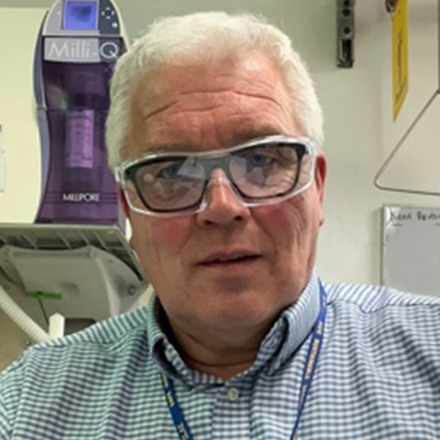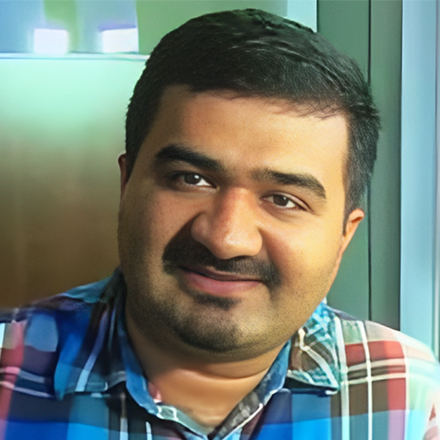
Description:
Dr. Ginny Gulick examines erosional features on Mars, looking for the tell-tale signs of running water in Mars’ geological history. Some of the meandering valley networks that lace the landscape may indicate that Mars was a warmer, wetter world billions of years ago. But other features, including gullies found around many impact craters and valley walls, may be evidence of water that flowed on the martian surface more recently.
Dr. Gulick uses stereo images and Digital Terrain Models (DTMs) from Mars-orbiting cameras including HiRISE, CTX, and HRSC to look for features caused by flowing water (“fluvial” features) or by heated groundwater (“hydrothermal” features). The current project is focused on understanding gully formation in Mars’ more recent geological history, by studying their 3D slope morphology, their spatially-associated landforms, and their topographic and environmental settings. However, we are also interested in understanding the formational environments of channels, valleys, and paleolakes throughout Mars’s geological history. We will use information from terrestrial analog sites, hydrologic models, and DTMs to estimate water discharges, volumes, and erosion rates to better understand the implications for paleoclimatic change.
Qualifications:
Students with a geology, geography, or hydrology background with an emphasis in geomorphology and experience with computer software ArcGIS and/or ENVI are strongly desired. Experience with Python and/or MatLab preferred.

Title: Searching for radio technosignatures with the Allen Telescope Array
Description:
Radio waves are low-energy, travel at the speed of light, and are not blocked by gas and dust. For these reasons (among many others), it is hypothesized that extraterrestrial intelligences (ETIs) might use radio transmitters to send signals across the galaxy. We might be able to detect these radio “technosignatures” using radio instruments such as the Allen Telescope Array (ATA). In this project, the REU student will select a set of technosignature targets and observe them with the ATA. The student will then use existing software such as bliss or SPANDAK to perform a novel, in-depth technosignature search of those targets, with the goal of setting novel upper limits ever for the chosen targets (or detecting ETI!).
The student will complete a discrete observing project over the course of the summer, including planning an observing campaign, executing observations at HCRO, and analyzing data. They will work primarily at the SETI Institute in Mountain View, but will also have the opportunity to travel to Hat Creek Radio Observatory to get hands-on experience with the ATA.

Description:
Planetary rings can exist close to the planet where the tidal forces prevent formation of moons. Over time, rings can spread and think out, with the outer edge giving rise to moons which hen migrate out through interactions with the ring. Over longer timescales, the moons migrate due to tides they raise on the planet. Depending on planet's rotation, it is possible for planets to be caught in a ring-moon cycle (proposed by Hesselbrock and Minton 2017), in which a planet alternates between having moons and rings. This kind of cycle requires a relatively slowly-rotating planet, and may have happened in the past to Mars and Uranus. As many close-in exoplanets are thought to be tidally spun down by their stars, they may be susceptible to ring-moon cycles. Ring-moon cycles may offer a mechanism to produce youthful rings around billion-year-old planets, which may ultimately be detectable through transits.
This project will focus on analytical calculations of the orbital dynamics of exoplanet systems, as well as on designing and running computer simulations. The goal is a theoretical assessment of the potential and requirements for ring-moon cycles around exoplanets.
Requirements:
Background in physics (especially classical mechanics above freshman level) and interest in theoretical work are required.

Description:
This is literally a SETI Institute project to find patterns of lights in the sky! The Geostationary Lightning Mapper (GLM) instruments onboard the GOES 16, 17, 18 and 19 weather satellites are designed to detect lightning, but they can also detect other bright flashes in Earth's atmosphere. We have developed a machine learning based exploding meteor (i.e. bolide) detection pipeline as part of the Asteroid Threat Assessment Project (ATAP) funded by NASA's Planetary Defense Coordination Office (PDCO). With the pipeline running for numerous years now, we have assembled a vast and unique catalog of bright meteors using a consistent and wide field of view. This project will involve studying the statistical distribution of bolides in our data set. Can we find patterns in these bolides? Can we find clusters of bolides, possibly multiple events from a single fragmented object? Are all the bolides evenly distributed across the globe?
Qualifications:
The ideal student should already be familiar with Python and have experience processing large data sets. A basic understanding or a desire to learn more about machine learning, cluster analysis and population statistics is highly desirable.

Description:
Supernovae play a key role in the chemical and cosmic dust budget of galaxies, producing heavy elements and dust in their ejecta and processing dust. These explosions light up regions of stellar birth, trigger the next generation of star formation, return solid material to the gas phase, and create the elements necessary for life. The origin of cosmic dust in the early Universe after the Big Bang has long been the subject of considerable debate. Supernovae from massive stars could be the major source of that dust.
Infrared imaging and spectroscopy provide direct information on the composition, amount, and distribution of molecules and dust in supernovae and their remnants. This project is to study molecule and dust formation in supernova-ejecta and the heating and cooling of gas by using ground-based near-infrared observations of varied samples of supernovae in nearby galaxies. The student will work on optical data from a robotic network of optical telescopes - Las Cumbres Observatory (https://lco.global/) and near-infrared observations using IRTF (https://irtfweb.ifa.hawaii.edu/), 8-meter Gemini (https://www.gemini.edu/), or 10-meter Keck (https://www.keckobservatory.org/) telescopes. A particular emphasis will be data analysis of NIR spectroscopy of IRTF, Gemini, or Keck data. Additional data analysis may be performing photometry of optical imaging data. The student can have opportunities to participate in remote observing runs if the student has a strong motivation.
Qualifications:
The ideal candidate would be an enthusiastic student interested in possibly pursuing a post-graduate career in astronomy, physics, or chemistry by building a research experience through this astrochemistry project. We expect the student to have taken introductory physics and chemistry courses. Experience in Python, IDL, or high-level programming language is preferable but not required.

Description:
Caves represent unique micro-environments on Mars in which the conditions lethal to Earth-like life that prevail at the planet’s surface become mitigated: caves offer shielding from stark day-night temperature variations, micro-meteoritic bombardment, and ionizing radiation from deep space and the Sun. Possibly, many caves on Mars may also harbor H2O (liquid water or ice), making them of major interest for astrobiology.
Over 1,000 caves, pits, and other discrete deep depressions have now been inventoried on Mars. Most are found in Mars’ two major volcanic provinces, Tharsis and Elysium. In the years ahead, robotic missions are anticipated to begin exploring Mars’ caves, to be followed eventually by astronauts. But which cave(s) should we explore first? The student will work with Dr Lee to identify and prioritize, using in particular the Mars Quickmap, Mars Trek, and Google Mars data visualization and analysis tools, optimum candidates for future robotic and human cave exploration on Mars.


Title: Extremophiles: How do they do it?
Description:
Over the past 4 decades, our knowledge about life that can flourish under extreme conditions has dramatically expanded. Psychrophiles can metabolize down to -25°C, while hyperthermophiles grow at up to 122°C. In the deep ocean, piezophiles have been found living under pressures of >110 MPa. Life under other marginal conditions such as high salinity, extremes of pH, desiccation, and radiation, as well as combinations of stressors, has now been found.
Information about extremophiles is relevant for biotechnological applications, bioremediation, and in our search for life elsewhere in the universe. Some scientists argue that proteins adapted for high temperature or pressure will be stiffer than those that operate under freezing conditions. Others argue it is not so simple.
To address this issue, we are studying a set of small proteins called rubredoxins by multiple techniques to compare their dynamics at different temperatures. Rubredoxins (Rds) are the smallest of all Fe-S proteins – with only about 55 amino acids, their simplicity makes them an ideal system for testing theories about protein structure.
This project will involve growing crystals of rubredoxins and collecting x-ray diffraction data on these proteins as a function of temperature. The crystal structures will be compared with results from spectroscopy experiments (circular dichroism and fluorescence) to see if the predicted differences in flexibility do in fact exist. For the student with a computational bent, normal mode and molecular dynamics calculations will assist in interpretation of the data.
Qualifications:
The ideal candidate would have at least one year each of chemistry, physics, and some knowledge of biochemistry. Familiarity with Mathematica and/or bioinformatics software would be a plus but is not essential. This project is suitable for a student interested in proteins and life under extreme conditions.


Title: Enzymes that capture hydrogen – What is the first step?
Description:
The production or consumption of molecular H2 by hydrogenase can be as fast as by the best artificial fuel cells, but using earth-abundant Fe or Ni instead of rare and expensive Pt. Along with their metabolic significance, hydrogenases are important targets for novel antiparasitic drugs. They also generate intense technological interest for a future H2 economy. In [NiFe] hydrogenases, catalysis occurs at a Ni-Fe site, while in [FeFe] hydrogenases the active site is an ‘H-cluster’. We plan to study both of these enzymes.
Most mechanisms for hydrogenases assume an enzyme-H2 complex as a key intermediate, although some proposals skirt the existence of a bound H2 species, with splitting to hydride and proton directly through a transition state. To settle this debate, we are planning to examine hydrogenases in cryosolvents at low temperatures, down to perhaps -100 °C. We will use photochemistry to generate H2 in low temperature samples, and we will look for intermediates using IR spectroscopy. This project will provide experience with nanoparticles, Nd:YAG lasers, quantum cascade lasers, and FT-IR spectrometers.
Qualifications:
The ideal candidate would have at least one year each of chemistry, physics, and some knowledge of biochemistry. Some knowledge of basic spectroscopy would be helpful. Familiarity with Mathematica and/or molecular graphics software would be a plus but is not essential. This project is suitable for a student interested in enzymes, catalysis, and spectroscopy.

Description:
Dr. Lori Fenton’s research involves studying evidence for recent climate change on Mars, with a focus on aeolian (wind-blown) processes. This includes atmospheric modeling of near-surface wind conditions, morphologic studies of windblown landscapes (e.g., ripples, dunes, yardangs) and phenomena (e.g., dust devils), and analog field studies to better understand how similar features and processes occur on Mars.
Dust devils are swirls of air that loft dust and other small debris off the ground in dry regions on Earth. Unlike tornadoes that form from shear generated during thunderstorms, dust devils seem to appear out of nowhere on warm, cloudless days – however they are actually part of a turbulent and convective atmosphere that only becomes visible when convectively-driven vortices skim the surface and grow strong enough to loft sediment. Dust devils are also common on Mars, where dust is plentiful and the weather is most often clear and convectively buoyant.
What can we learn about environmental controls on Mars dust devils (that is, how tall and wide they grow, how densely packed they are, etc.) by studying those that form on Earth? Can we then use observations of dust devils on Mars to infer local weather conditions? Field campaigns to a Nevada site in 2019 and 2021 produced a vast data set full of dust devil images and the meteorological conditions in which they form. The student will help discover the physical characteristics of these dust devils, answering a subset of a nearly endless list of interesting questions: Where do dust devils preferentially form – on bare playa or alluvial plain? How fast do they move relative to the background wind? Does dust devil width change with location or wind speed? Does the width change with increasing solar energy as the sun rises in the morning? If a dust devil loses its dust and becomes invisible, can it once again pick up energy and reappear downwind?
Qualifications:
Some background in geology or meteorology, as well as Python (or any programming language), is preferred. However, the project can be scaled to the experience level of the student.

Description:
Young stars are surrounded by flat disk-like structures that eventually go on to form planetary systems. These disks are short-lived and lose material through winds or outflows. Much of the material also accretes onto the central star. How long material survives, and the composition of remnant material determines the kinds of planets that can form within these disks. The project will use computational models to simulate disk evolution under different scenarios and compare simulation results with observational data to discriminate between various evolutionary models.
Qualifications:
Physics majors are preferred. Computational experience with Python or another high-level programming language is required.

Title: Using Machine Learning to Search for Radio Technosignatures at the ATA
Description:
The Allen Telescope Array (ATA) is a state-of-the-art radio telescope array and the only facility specifically dedicated to the search for technosignatures, which are indicators of technologically advanced extraterrestrial life. Examples of such signals include narrowband signals with energy concentrated within only a few Hz and broadband signals exhibiting artificial dispersion not known to be produced by any natural processes. The ATA’s ability to observe multiple regions of the sky simultaneously using its multibeam system provides a unique advantage in distinguishing potential signals of interest from pervasive human-made radio frequency interference (RFI). However, analyzing the large datasets produced by multibeam observations remains a challenging task when it comes to isolating signals of interest.
This project aims to develop advanced machine-learning tools to enhance the ATA’s multibeam capability to detect and isolate different types of radio signals, which may serve as potential indicators of technosignatures. First, the student will use an autoencoder, a type of neural network designed to compress and reconstruct data, to create a compact representation of typical radio observations from the ATA. By training the autoencoder on real ATA data augmented with simulated signals, the model will learn to identify key features associated with signals of interest as well as common RFI. Next, a contrastive neural network will be integrated into the pipeline to compare the signal representations generated by the autoencoder across beams. The contrastive neural network is designed to learn the differences and similarities between inputs, enabling it to distinguish RFI (present in multiple beams) from signals localized to a single beam—potential candidates for technosignatures. The project offers hands-on experience with machine-learning techniques applied to radio astronomy data and will directly contribute to ongoing and future technosignature search programs across many observatories.

Description:
Dr Douglas Caldwell is an astronomer who studies the detection and characterization of exoplanets. NASA’s Kepler mission showed us that planets, including small potentially habitable ones, are common. The Transiting Exoplanet Survey Satellite (TESS), operating since 2018, has been finding more planets, including many in our Solar neighborhood. As TESS data continue to pour in, the number of detections of potential planets is outpacing the ability of scientists to manually keep up.
The TESS Science Processing Operations Center is currently searching the light curves of 160,000 stars per month from the TESS full-frame image data and detecting thousands of potential planets, known as Threshold Crossing Events (TCE). Currently, the TCEs are recorded in the TESS archive, but are not systematically vetted to determine which of them might be promising exoplanet candidates.
The student will work to refine and develop tools to help classify and vet the TESS full-frame image detections. They will start by using a set of existing vetting tools, tuning them to work on the full-frame image results. The student will work with a group that is using a deep neural network to classify the TESS TCEs by helping to incorporate these full-frame image results into the machine learning model. The work will involve reviewing scientific literature; running, modifying, and writing code to analyze data; and writing-up results. The ideal outcome of this project will be a set of new planet candidates from TESS data and a scientific publication describing the work.
Qualifications:
This project is ideal for someone who is interested in exoplanets and has a solid programming background. A familiarity with either the Python or MATLAB programming languages is beneficial, as is interest in, or experience with machine learning techniques. The student should have a background in science or engineering and an interest in learning about detection statistics.
